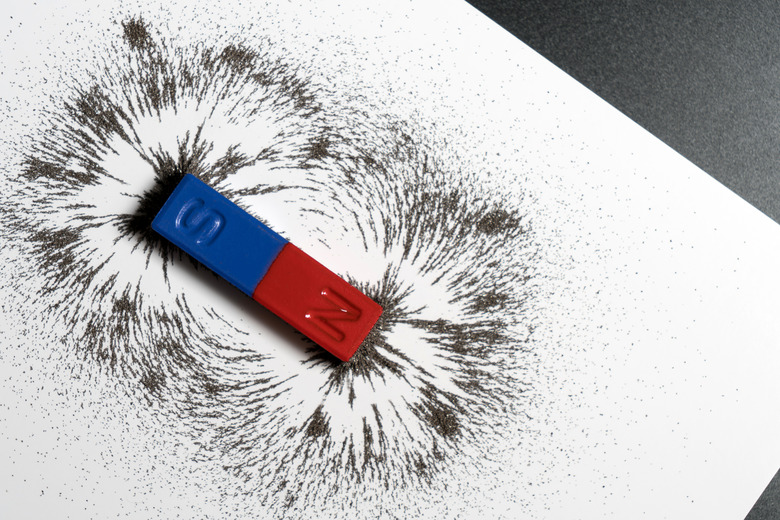How Does Temperature Affect Metal?
Metals are elements or compounds with excellent conductivity for both electricity and heat, making them useful for a wide range of practical purposes. The periodic table currently contains 91 metals, and each has its own specific properties. The electrical, magnetic and structural properties of metals can change with temperature and thereby provide useful properties for technological devices. Understanding the impacts of temperature on the properties of metals gives you a deeper appreciation for why they're so widely-used in the modern world.
TL;DR (Too Long; Didn't Read)
**TL;DR**
Temperature affects metal in numerous ways. A higher temperature increases the electrical resistance of a metal, and a lower temperature reduces it. Heated metal undergoes thermal expansion and increases in volume. Increasing the temperature of a metal can cause it to undergo allotropic phase transformation, which alters the orientation of its constituent atoms and changes its properties. Finally, ferromagnetic metals become less magnetic when they can get hotter and lose their magnetism above the Curie temperature.
Electron Scattering and Resistance
Electron Scattering and Resistance
As electrons flow through the bulk of a metal, they scatter off each other and also off the boundaries of the material. Scientists call this phenomenon "resistance." An increase in temperature gives the electrons more kinetic energy, increasing their speed. This leads to a greater amount of scattering and a higher measured resistance. A decrease in temperature leads to a reduction in electron speed, decreasing the amount of scattering and the measured resistance. Modern-day thermometers use the change in electrical resistance of a wire to measure changes in temperature.
Thermal Expansion
Thermal Expansion
An increase in the temperature leads to a small increase in the length, area and volume of a metal, called thermal expansion. The magnitude of the expansion depends upon the specific metal. Thermal expansion results from the increase of atomic vibrations with temperature, and consideration of thermal expansion is important in a variety of applications. For example, when designing pipework in bathrooms, manufacturers need to take into account seasonal changes in the temperature to avoid bursting pipes.
Allotropic Phase Transformations
Allotropic Phase Transformations
The three main phases of matter are called solid, liquid and gas. A solid is a densely packed array of atoms with a particular crystal symmetry known as an allotrope. Heating or cooling a metal can lead to a change in the orientation of the atoms, with respect to the others. This is known as an allotropic phase transformation. A good example of an allotropic phase transformation is seen in iron, which goes from the alpha phase at room temperature to gamma-phase iron at 912 degrees Celsius (1,674 degrees Fahrenheit). The gamma phase of iron, which is able to dissolve more carbon than the alpha phase, facilitates in the fabrication of stainless steel.
Reducing Magnetism
Reducing Magnetism
Spontaneously magnetic metals are called ferromagnetic materials. The three ferromagnetic metals at room temperature are iron, cobalt and nickel. Heating a ferromagnetic metal reduces its magnetization, and it eventually completely loses its magnetism. The temperature at which a metal loses its spontaneous magnetization is known as the Curie temperature. Nickel has the lowest Curie point of the single elements and ceases to become magnetic at 330 degrees Celsius (626 degrees Fahrenheit), whereas cobalt remains magnetic until 1,100 degrees Celsius (2,012 degrees Fahrenheit).
Cite This Article
MLA
Markings, Samuel. "How Does Temperature Affect Metal?" sciencing.com, https://www.sciencing.com/temperature-affect-metal-4845/. 13 April 2018.
APA
Markings, Samuel. (2018, April 13). How Does Temperature Affect Metal?. sciencing.com. Retrieved from https://www.sciencing.com/temperature-affect-metal-4845/
Chicago
Markings, Samuel. How Does Temperature Affect Metal? last modified March 24, 2022. https://www.sciencing.com/temperature-affect-metal-4845/
